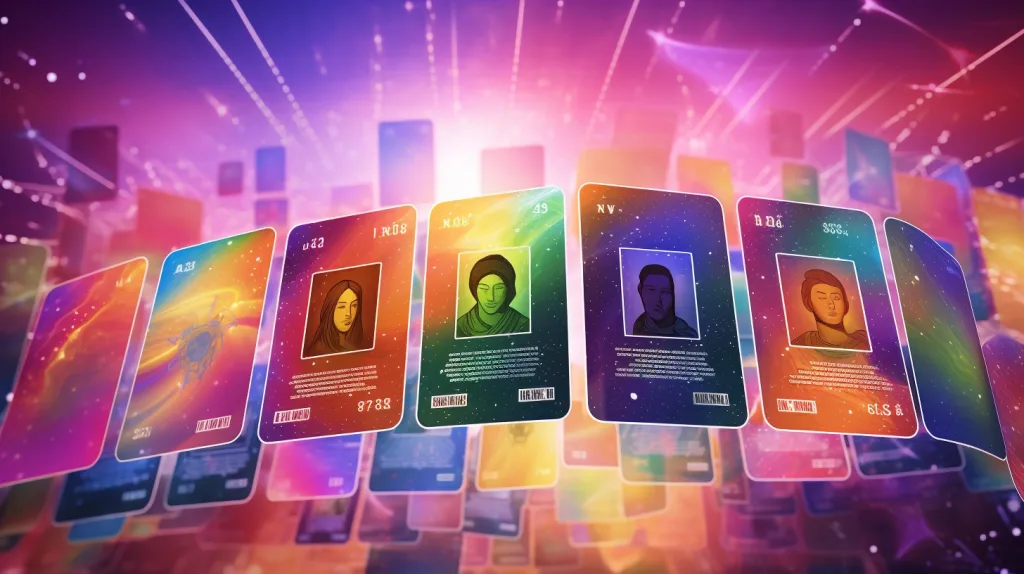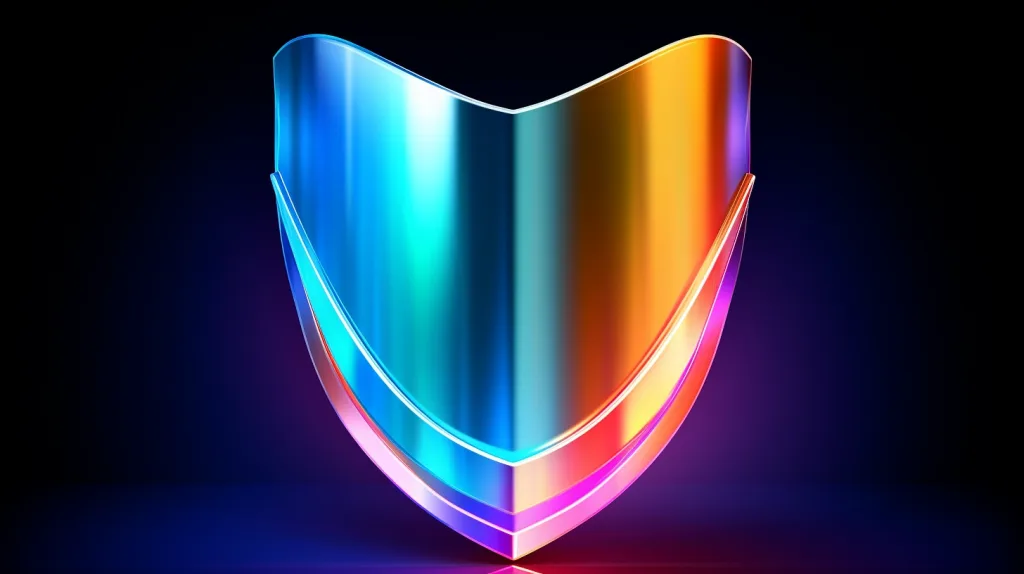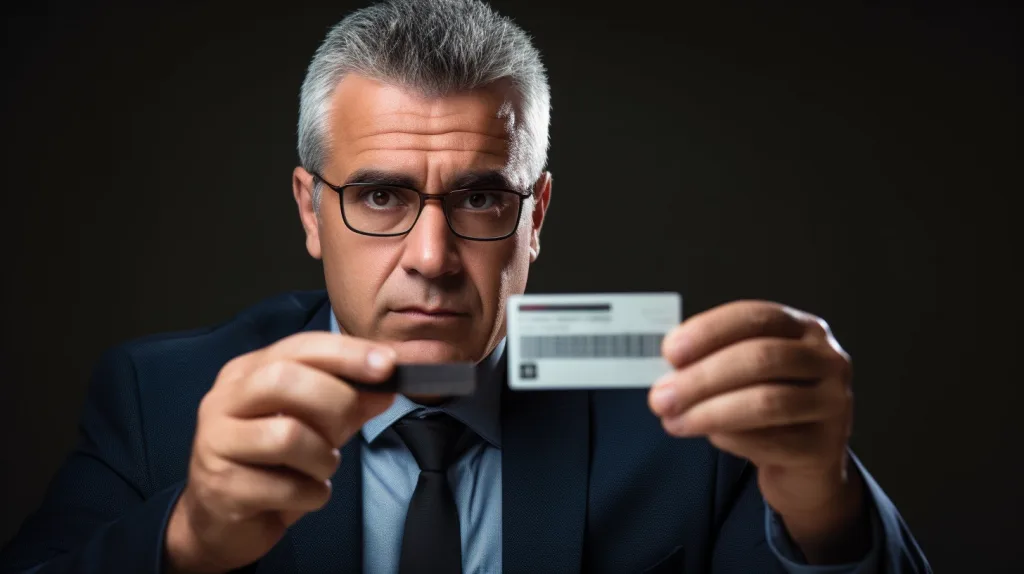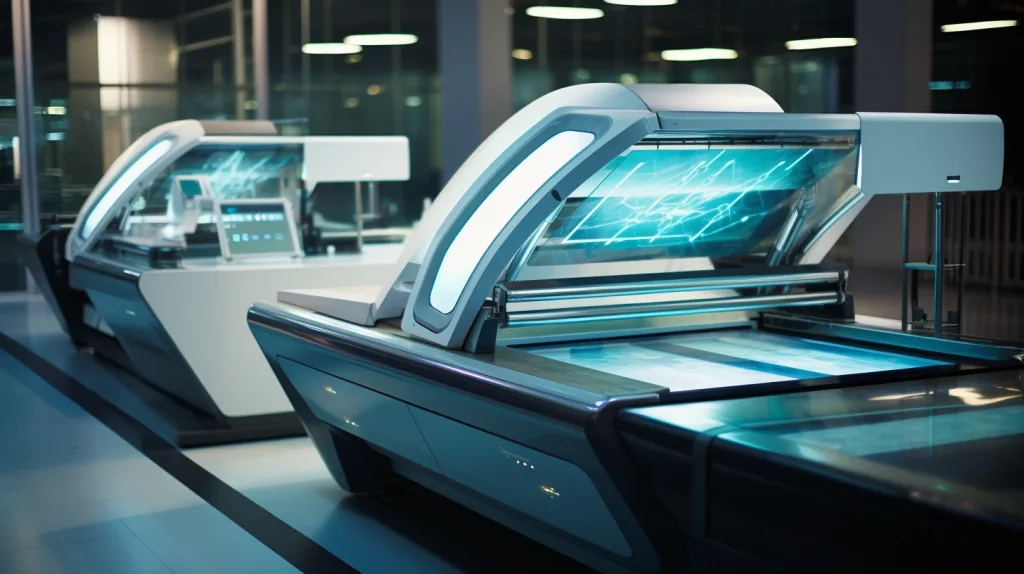5 Key Stages in the Evolution of Holography in Fake IDs
Exploring the World of Holography: How Modern Technology Elevates Fake ID Authenticity
When we talk about fake IDs, the first thing that comes to mind is the intricate details that make them look authentic. One of the most advanced features in modern fake ID designs is holography. But how did we get here?
Fake ID Introduction: The Role of Holography in Modern Identification
Hey there, fellow explorer of the tech realm! Ever held up your ID to the light, watching the hologram dance and shimmer, and wondered, “How did we get here?” Well, buckle up, because we’re about to embark on a whirlwind journey through the fascinating world of holography.
The world of fake ID has come a long way, especially with the integration of holographic technology. Holography plays a pivotal role in ID verification, making it a prime feature in both real and counterfeit IDs.
Brief overview of the importance of holography in ID verification
At its core, holography is a marvel of physics and artistry, capturing light in a way that presents a three-dimensional image on a two-dimensional surface. But beyond its aesthetic allure, holography serves a critical purpose in ID verification. It’s not just about the glitz and glam; it’s a sophisticated security measure. In the vast world of identification – from passports to driver’s licenses – that shiny emblem of holography is a gatekeeper, warding off potential counterfeiters.
The role of holography in enhancing the authenticity of Fake IDs
Let’s rewind a bit. It’s the 1970s. Disco is all the rage, bell-bottoms are in, and fake IDs? Well, they’re pretty easy to spot. They lacked the finesse and sophistication of their genuine counterparts. Fast forward to today, and the game has changed dramatically. Thanks to the evolution of holography, Fake IDs have undergone a transformation. They’re no longer the laughable replicas of yesteryears but convincing doppelgangers of the real deal. And a significant chunk of this transformation credit goes to holography.
A Glimpse into the Origins
While we’re diving deep, did you know that the word “holography” comes from the Greek words “holos,” meaning “whole,” and “graphe,” meaning “writing?” Quite apt, given that holography captures a complete picture, both in depth and detail. The concept might seem futuristic, but it’s been around for a while. The seeds of holography were sown in the late 1940s, thanks to the pioneering work of Hungarian-British physicist Dennis Gabor, who later snagged a Nobel Prize for his groundbreaking work.
The Pop Culture Connection
And it’s not just the world of IDs and security that’s been touched by the magic of holography. Pop culture has had its fair share of holographic moments. Remember the iconic scene in “Star Wars” where Princess Leia sends a holographic message through R2-D2? Or how about the holographic concerts featuring late artists like Tupac Shakur? It’s evident: holography has left its indelible mark not just on science and security but on entertainment and culture.
Historical Perspective
The journey of holography in identification began decades ago. Initially, it was a simple feature, but with the rise in fake ID production and the need for stricter security measures, holography’s role became more pronounced.
The Inception of Holography
The story begins in the 1940s, a time when the world was undergoing rapid change. Amidst the backdrop of World War II, a Hungarian-British physicist named Dennis Gabor was wrestling with improving the resolution of electron microscopes. His experiments led him to invent a method of creating 3D images, which he coined “holography” – derived from the Greek words ‘holos’ (whole) and ‘graphe’ (writing). Little did he know, his invention, which earned him the Nobel Prize in Physics in 1971, would revolutionize the way we perceive and authenticate images.
Early Applications: Beyond the Lab
While Gabor’s invention was groundbreaking, the technology of his time couldn’t fully realize the potential of holography. It wasn’t until the invention of the laser in the 1960s that holography truly found its footing. Lasers, with their coherent light, were the missing piece of the puzzle. With this new tool, researchers could produce bright, clear, and stable holograms. By the late 1960s, holography had moved out of the labs and into art galleries, with artists creating mesmerizing displays that captivated audiences.
Holography in Identification Documents
The 1980s marked a significant shift for holography. What was once a niche scientific endeavor and art form found its way into the mainstream. Governments and corporations recognized the potential of holograms as an anti-counterfeiting measure. The first credit cards with holographic security features made their debut, setting a new standard in card security. Around the same time, various countries began incorporating holograms into their passports and other critical identification documents. The shimmering, 3D images not only added an aesthetic appeal but also a robust layer of security that was challenging to replicate.
Pop Culture Embraces Holography
As the 20th century progressed, holography began to make waves in pop culture. Science fiction movies and TV shows, always on the hunt for futuristic tech, embraced holography with open arms. Who can forget the iconic holographic message of Princess Leia in “Star Wars,” imploring Obi-Wan Kenobi for help? Or the holographic interfaces in movies like “Minority Report”? These depictions, while fantastical, showcased the potential of holography and captured the public’s imagination.
NOTE:
From a physicist’s experiment in the 1940s to a ubiquitous security feature and pop culture mainstay, the journey of holography is a testament to human ingenuity and the endless possibilities of technology.
Advancements in Holographic Technology for Fake IDs
As the demand for fake IDs grew, so did the technology behind them. Innovations led to sharper images, multi-layered holograms, and even dynamic holograms that shift or move. The race to make the perfect fake ID was on, and holography was at the forefront.
Improved Resolution and Clarity
The journey towards clearer and more detailed holograms has been a relentless pursuit of perfection. Early holograms, while revolutionary, were often plagued by imperfections and lacked the crispness we associate with modern holography.
How newer holographic techniques offer sharper images
With the advent of digital holography in the late 20th century, the game changed. Digital techniques allowed for the manipulation and enhancement of holographic images, leading to sharper, more detailed visuals. This digital revolution also paved the way for computer-generated holography, where 3D objects could be rendered into holographic form without ever existing in the physical world.
The role of laser technology in refining holographic images
Laser technology has been instrumental in the evolution of holography. The introduction of pulsed lasers allowed for the capture of “freeze-frame” holograms, where fast-moving objects could be captured in holographic form with stunning clarity. This technology was so advanced that it even allowed scientists to capture a split-second image of a bullet traveling through an apple!
Multi-Layered Holograms
The quest for depth and realism led to the development of multi-layered holograms. These are akin to 3D movies but without the need for special glasses.
Introduction to the concept of layered holography
Layered holography is all about depth. By stacking multiple holograms on top of each other, it’s possible to create an image with a profound sense of depth and realism. This technique is often used in security applications, where the added depth makes the hologram even harder to counterfeit.
Benefits of multi-layered holograms in Fake IDs
For Fake IDs, multi-layered holograms are a game-changer. They add an extra dimension of authenticity, making the ID look and feel genuine. The depth and movement created by these layers can be incredibly challenging to replicate, providing an added layer of security.
Dynamic and Kinetic Holograms
The world of holography took another leap with the introduction of dynamic and kinetic holograms. No longer were holograms static images; they became alive, moving, and changing as you shifted your perspective.
The shift from static to moving holographic images
Imagine tilting an ID card and seeing the holographic image wave back at you or perform a series of animations. This isn’t science fiction; it’s the magic of dynamic holography. These holograms are created using a series of rapid pulses, capturing multiple images in quick succession and displaying them as a coherent, moving image.
How dynamic holograms add an extra layer of security
It’s challenging enough to replicate a static hologram, but a moving one? That’s a counterfeiter’s nightmare. Dynamic holograms are incredibly complex and require sophisticated equipment to produce, making them a top choice for high-security applications.
Color-Changing Holograms
Adding another feather to its cap, holography introduced color-changing or “rainbow” holograms. These holograms shift color as you change your viewing angle, producing a mesmerizing rainbow effect.
The science behind color-shifting holograms
This effect is achieved through a technique called “diffraction,” where light is split into its constituent colors. By controlling the angles and spacing of the holographic grooves, it’s possible to create a spectrum of colors that shift and change as you move.
The difficulty in replicating these advanced holograms
Replicating the precise angles and spacings required for color-shifting holograms is no small feat. It requires advanced equipment and expertise, making these holograms a formidable challenge for counterfeiters.
NOTE:
From its humble beginnings to the cutting-edge technology of today, the world of holography has seen relentless innovation. Each advancement has not only pushed the boundaries of imaging but has also raised the bar for security and authentication.
Integration of Holography in Fake IDs
Today, if you buy a fake ID or even look up fake ID reviews, you’ll notice the emphasis on the quality of holography. It’s become an essential feature, with many fake ID websites boasting about their advanced holographic techniques.
The Early Days of Holography in IDs
When holograms first made their appearance on legitimate IDs in the 1980s, it was a game-changer for security. These shimmering emblems were not just decorative; they were a formidable barrier against counterfeiting. But as with all challenges, it presented an opportunity for the counterfeit industry. The race was on to replicate these holograms and integrate them into Fake IDs.
Challenges of Early Replication
In the beginning, replicating a hologram was no easy task. Early counterfeiters often resorted to simplistic methods, like using metallic stickers or shiny imprints, in an attempt to mimic the holographic effect. To the trained eye, these early fakes were easily distinguishable. But to the average person, they often passed muster.
Adoption of Genuine Holographic Techniques
As technology became more accessible and affordable, the line between genuine and fake holograms began to blur. Counterfeiters started using actual holographic techniques to produce their fake IDs. With the right equipment, they could produce holograms that were nearly indistinguishable from the real deal.
Custom Holography
One significant advancement in the world of Fake IDs was the move towards custom holography. Instead of just replicating existing designs, some counterfeiters began creating their own custom holographic designs. This not only added an aura of authenticity to the Fake ID but also made it harder for authorities to identify them based on hologram design alone.
Modern Fake IDs: A Mirror to the Real Thing
Today, the world of Fake IDs has evolved to such an extent that they often mirror their genuine counterparts in every detail. With advancements in holographic technology becoming widely available, the quality of holograms on Fake IDs has reached unprecedented levels. From multi-layered holograms to dynamic, color-shifting designs, modern Fake IDs are a testament to the prowess of counterfeiters and the relentless march of technology.
The Role of Digital Marketplaces
The rise of the internet and digital marketplaces has played a significant role in the proliferation of high-quality Fake IDs. Online platforms have allowed counterfeiters to reach a global audience, offering custom-made IDs with advanced holographic features. These platforms often operate in the shadows, with sellers and buyers using pseudonyms, making it challenging for authorities to crack down on them.
NOTE:
In conclusion, the integration of holography into Fake IDs is a fascinating journey of cat and mouse. As authorities innovate, so do counterfeiters. And in this ever-evolving landscape, holography stands out as a beacon of innovation, challenge, and artistry.
Benefits of Advanced Holography in Fake IDs
Advanced holography doesn’t just make a fake ID look real; it offers enhanced security, making detection harder. For those in the know, understanding the intricacies of holography can be the difference between a passable ID and a failed one.
Increased Authenticity
The primary goal of any Fake ID is to pass off as genuine, and advanced holography plays a pivotal role in achieving this. With the ability to replicate intricate designs, color shifts, and dynamic movements, modern holograms can be nearly indistinguishable from those on legitimate IDs.
Micro-Details and Precision
One of the hallmarks of advanced holography is the ability to capture micro-details with incredible precision. These minute details, often invisible to the naked eye, can be magnified under scrutiny, adding another layer of authenticity to the ID. Such intricacies can be a nightmare for anyone trying to differentiate between a genuine and a fake ID.
Enhanced Security
While Fake IDs aim to bypass security, the irony is that advanced holography has made them more secure. The complexity of modern holograms makes them incredibly challenging to replicate without the right tools and expertise.
Resistance to Tampering
Advanced holograms are not just difficult to replicate; they’re also resistant to tampering. Any attempts to alter or modify the hologram can lead to visible distortions, making it evident that the ID has been tampered with. This feature acts as a deterrent for those looking to modify existing IDs.
Boosted Confidence for Users
For those using Fake IDs, the advancements in holography offer something invaluable: confidence. Knowing that their ID is equipped with the latest holographic technology can provide an added sense of security when presenting it.
Peace of Mind in High-Stake Situations
Be it entering a nightclub or purchasing age-restricted products, high-stake situations can be nerve-wracking for Fake ID users. Advanced holography, with its impeccable replication of genuine features, offers peace of mind in these scenarios. The knowledge that their ID can withstand scrutiny gives users the confidence to navigate such situations with ease.
Perceived Value and Prestige
On a more psychological level, possessing a Fake ID with advanced holographic features can offer a sense of prestige. The shimmering, dynamic holograms can be perceived as a mark of quality, indicating that no expense was spared in crafting the ID. This perception can further boost the user’s confidence in the ID’s authenticity.
NOTE:
In the ever-evolving dance between security measures and countermeasures, advanced holography stands out as a beacon of innovation. Its benefits in the world of Fake IDs are manifold, offering authenticity, security, and confidence in equal measure.
Challenges in Fake IDs Holography and the Road Ahead
With advancements come challenges. As fake ID scanners become more sophisticated, the fake ID industry must stay one step ahead. The ongoing battle between counterfeiters and detection technologies is fierce, with both sides continuously evolving.
The Ongoing Battle Between Fake ID Creators and Detection Technologies
It’s a classic game of cat and mouse. As Fake ID creators adopt advanced holographic techniques, authorities and institutions invest in sophisticated detection technologies. This constant back-and-forth has led to rapid advancements on both sides, pushing the boundaries of what’s possible in holography and detection.
Emergence of Advanced Scanners
One of the significant challenges for Fake IDs, even those with advanced holography, is the emergence of state-of-the-art scanners. These devices, equipped with AI and machine learning capabilities, can detect minute discrepancies and anomalies in holograms, making it increasingly challenging for Fake IDs to pass muster.
Potential Future Advancements in Holography
While the present is filled with challenges, the future of holography holds immense promise. Researchers and scientists are continuously exploring new frontiers in the field, aiming to revolutionize the way we perceive and interact with holograms.
3D Holographic Displays
Imagine a world where holograms are not just confined to IDs or credit cards but are an integral part of our daily lives. The potential for 3D holographic displays, where images float in mid-air, is being explored. Such advancements could redefine entertainment, communication, and even education.
Interactive Holography
Another exciting frontier is interactive holography. Instead of being passive observers, users could interact with holograms, manipulating them in real-time. This could have profound implications for industries like gaming, healthcare, and design.
The Ethical Implications
As with any technology, especially one as potent as holography, there are ethical considerations. The ease with which Fake IDs can be created and the potential misuse of holographic technology in deceptive practices is a concern for many. Balancing innovation with ethical considerations will be a pivotal challenge in the years to come.
NOTE:
In conclusion, the world of holography is at a crossroads. The challenges are many, but the potential for innovation is boundless. As we look to the future, one thing is clear: the journey of holography is far from over, and the road ahead is filled with promise and potential pitfalls.
Conclusion
The world of fake IDs is fascinating, with holography playing a starring role. As technology continues to advance, so will the methods used to create and detect fake IDs. Staying informed is key, especially in a digital age where the line between real and fake is blurrier than ever.
The Undeniable Role of Holography in Elevating Fake IDs
The world of Fake IDs has been irrevocably transformed by holography. What began as a simple security measure has evolved into a sophisticated art form, blurring the lines between reality and illusion. The shimmering emblems, the depth of the images, and the sheer brilliance of modern holograms are a testament to decades of innovation and ingenuity.
A Dance of Technology and Craftsmanship
Behind every hologram on a Fake ID lies a delicate dance of technology and craftsmanship. It’s a blend of cutting-edge equipment, deep understanding of light and physics, and an artisan’s touch. This intricate process, often taken for granted, is the culmination of years of research and experimentation.
The Societal Impact of Holography
While our focus has been on Fake IDs, the societal impact of holography extends far beyond. From revolutionizing medical imaging to redefining entertainment, holography touches various facets of our lives. Its influence on pop culture, as seen in movies and music, underscores its profound impact on society.
A Glimpse into the Future
As we gaze into the crystal ball, the future of holography is rife with possibilities. With advancements in quantum physics, AI, and nanotechnology, we might soon witness holograms that are not just visual but tactile, allowing us to touch and feel 3D projections. The realm of augmented reality, where holograms blend seamlessly with our environment, could redefine our very perception of reality.
NOTE:
In wrapping up our deep dive into the world of holography and Fake IDs, one thing stands out: we are just scratching the surface. The road ahead is filled with challenges, but the promise of innovation and the allure of the unknown beckon. As we continue this journey, let’s embrace the magic of holography, celebrate its achievements, and eagerly anticipate the wonders yet to come.
- Think You Can Get a Credit Card Without an ID? Here’s the Harsh Reality - January 7, 2024
- I Tried Opening a Bank Account Without an ID — What Happened Next Was Wild - January 6, 2024
- Exposed? No — Protected: Why Fake Verification Saves You Trouble - January 5, 2024





